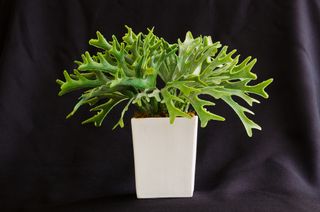Those Interior Plants That Have Been Scrubbing the Air You Breathe?
"This has been a common misconception for some time. Plants are great, but they don't actually clean indoor air quickly enough to have an effect on the air quality."
"This is certainly an example of how scientific findings can be misleading or misinterpreted over time."
"But it's also a great example of how scientific research should continually re-examine and question findings to get closer to the ground truth of understanding what's actually happening."
Dr.Michael Waring, associate professor, Architectural and Environmental Engineering, Drexel College of Engineering
 |
Back in 1989 NASA scientists published a paper that convinced the world the placement of houseplants in a home or an office has the capacity to absorb circulating pollutants. The result was a popular rush to buy indoor plants to cleanse indoor air. NASA's experiment in a sealed environment recommended one potted plant for each 100 square feet. Now, a new analysis resulting from research published in the Journal of Exposure Sciences and Environmental Epidemiology has come out with an interpretation quite at variance with that of NASA's original paper.
Upon further examination that analysis has reached the understanding that it would require over 300 plants per square foot for any benefit to be gained greater than the simple expedient of opening a few windows to allow the circulation of fresh air into an interior -- home or office. To these researchers the problem began with NASA having conducted its tests in the kind of sealed environments that fail to replicate conditions in most homes or offices.
NASA's concern was how best to maintain fresh air for the benefit of astronauts in biospheres or in space stations. The goal was to reach a solution for "sick building syndrome". That would be a recognized air circulation condition that had become problematic dating back to the late 1970s of super-insulated and energy-efficient interiors. So plants like English ivy, bamboo, Gerbera daisies and Peace lilies were named by the space agency for their ability to remove benzene, formaldehyde and trichloroethylene from indoor air.
 |
Is this staghorn fern (Platycerium ridleyi) really cleaning the indoor air?
(Image: © Gow27 | Shutterstock.com)
|
To this very day, these are the plants identified by garden centres for their very special properties in air-cleansing. Drexel University in Philadelphia, however, found that on the contrary, house plants have little effect whatever, and that in reality it is natural ventilation that succeeds in cleaning air. The Drexel researchers calculated "clean air delivery rate" for plants in analyzed studies, finding the rate at which plants dissipate compounds to be quite below the usual rate of air exchange which movement of people cause in their coming and going; and opening doors and windows.
A reduction in the concentration of volatile organic compounds over time was shown by some of the studies, leading people to trust plants for the virtue of air-purification. The study team's calculations, however, indicated it would require between three and 312 plants per square foot of floor space to equal the air-cleansing capacity of a building's air-handling system -- or a couple of open windows in a house.

Labels: Air Purifying Plants, Airborne Contaminants, Bioscience, Myths, Research

0 Comments:
Post a Comment
<< Home